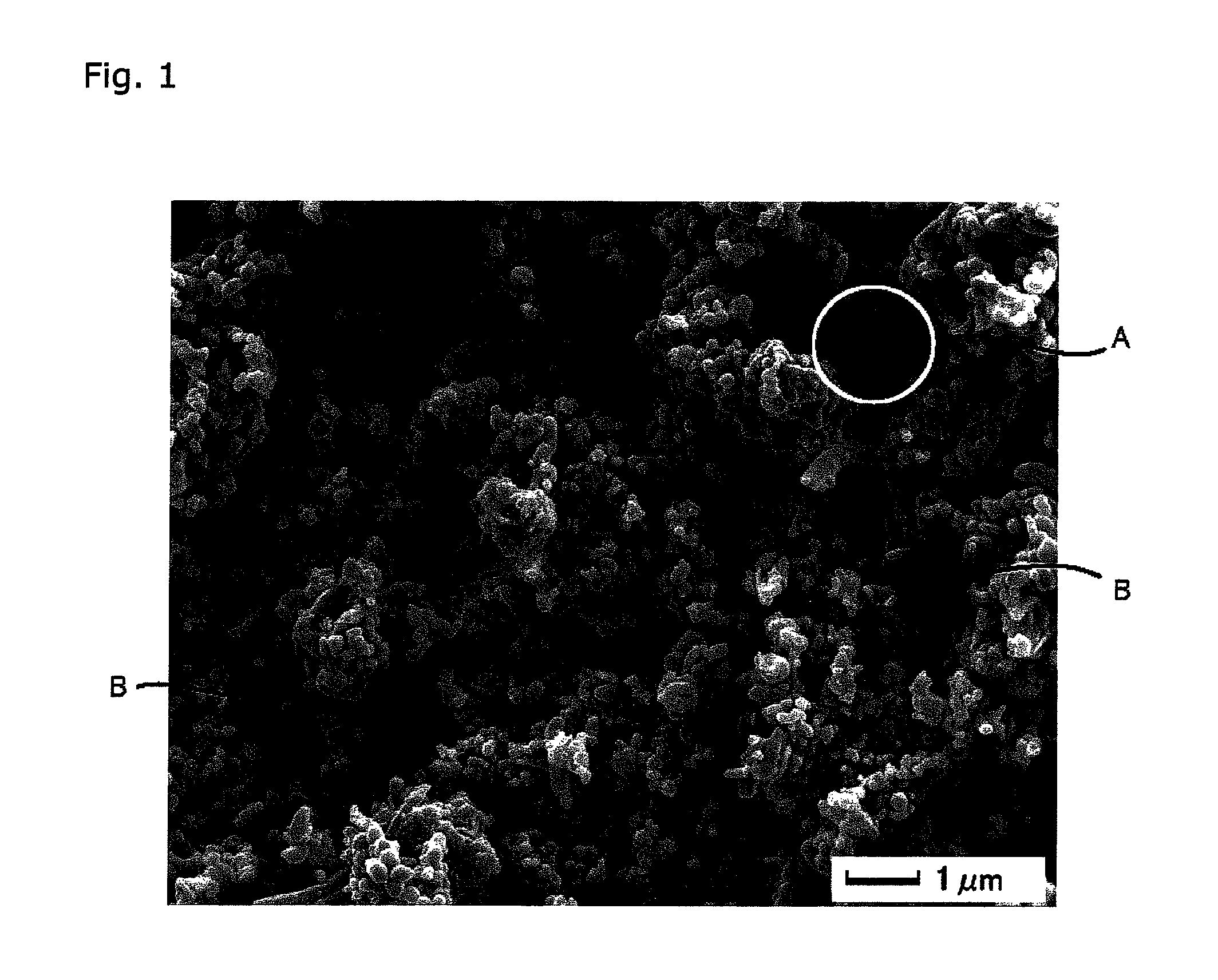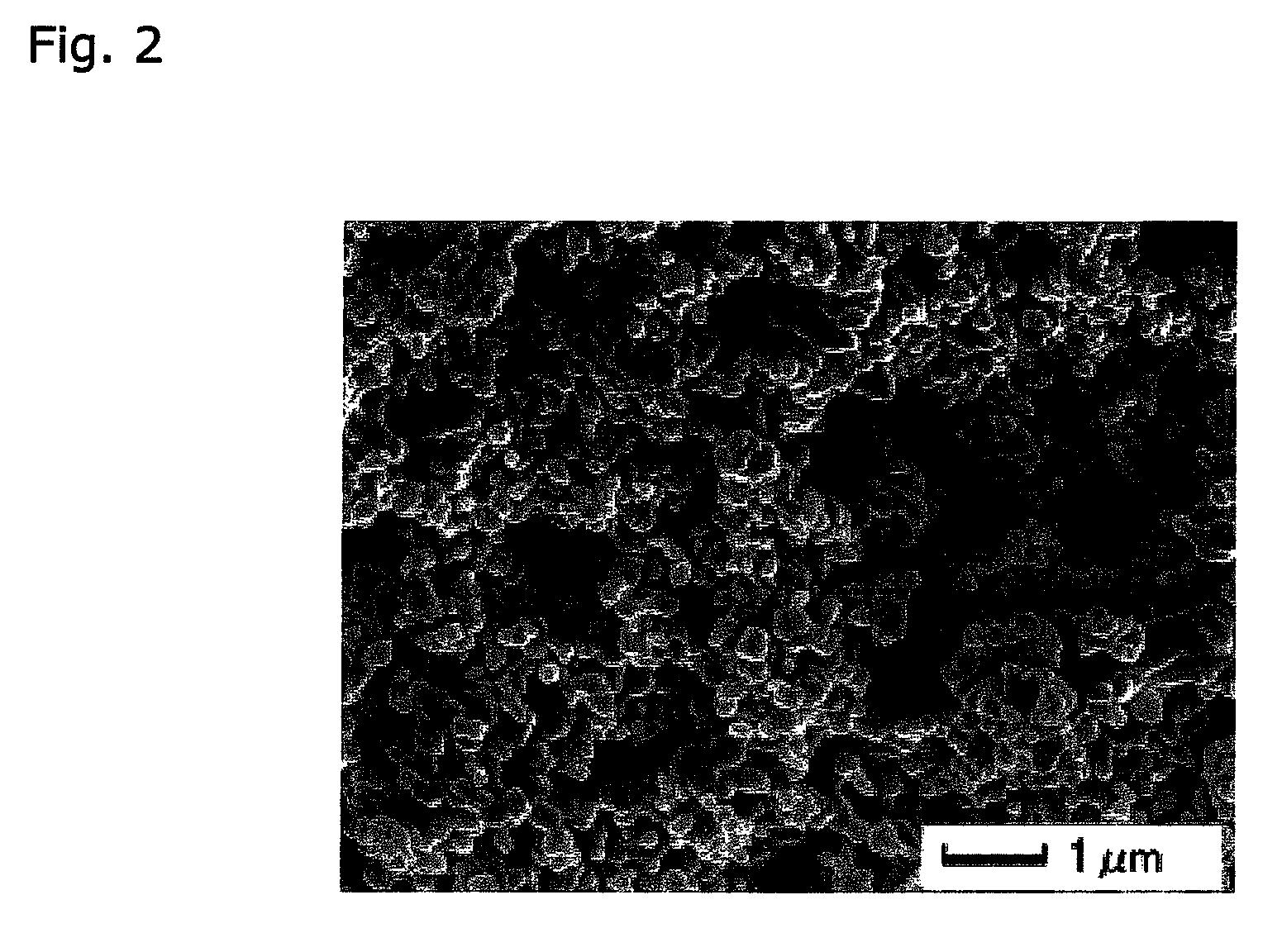Mixed material of lithium iron phosphate and carbon, electrode containing same, battery comprising such electrode, method for producing such mixed material, and method for producing battery
a lithium iron phosphate and carbon technology, applied in the direction of lithium compounds, non-metal conductors, cell components, etc., can solve the problems of low thermal stability of the positive active material of the positive active material of the compact battery, the configuration of the presently available compact battery cannot meet the required safety, and the safety of the battery is very important. , to achieve the effect of increasing the battery capacity
- Summary
- Abstract
- Description
- Claims
- Application Information
AI Technical Summary
Benefits of technology
Problems solved by technology
Method used
Image
Examples
examples
[0096]Hereinafter, the invention will be described with reference to preferable examples.
example 2
[0113]Production of LiFePO4 / C
[0114]At first, lithium hydroxide (LiOH.H2O) and ammonium phosphate (NH4)3PO4.3H2O) were dissolved in ultrapure water to produce a mixed solution. Next, iron sulfate (FeSO4.xH2O) was dissolved in ultrapure water containing ascorbic acid to produce a mixed solution. In this case, the mixing ratio of lithium hydroxide, ammonium phosphate, iron sulfate, and ascorbic acid was adjusted to be 2.5:1:1:0.2 by molar ratio.
[0115]These two mixed solutions were mixed and hydrothermally treated at 170° C. for 12 hours and then cooled. Further, the obtained solution was filtered to collect a LiFePO4 precursor which was washed with ultrapure water ad acetone and successively vacuum-dried at 100° C. for 1 hour.
[0116]Finally the LiFePO4 precursor was heated at 400° C. for 1 hour in argon atmosphere to obtain a LiFePO4 powder.
[0117]The LiFePO4 powder was set in a firing furnace and lithium iron phosphate supporting carbon B (LiFePO4 / C) was produced in the same conditions ...
examples 3 to 5
[0143]A LiFePO4 powder was produced in the same manner as Example 1. Lithium iron phosphate E, F, and G supporting carbon (LiFePO4 / C) were produced in the same manner as Example 1 by setting the powder in a firing furnace, except that the temperature of the firing furnace was changed to 385° C., 500° C., and 750° C., respectively, at the time of depositing carbon. Nonaqueous electrolyte secondary batteries E, F, and G of Examples 3 to 5 were produced in the same manner as Example 1, except that the lithium iron phosphate E, F, and G supporting carbon were used. Corresponding relation of the temperatures of the firing furnace and the reference characters E, F, and G of the corresponding nonaqueous electrolyte secondary batteries are as shown in Table 3.
[0144]Next, with respect to nonaqueous electrolyte secondary batteries E to G, the low rate discharge capacity and high rate discharge capacity were measured in the same conditions as those of the nonaqueous electrolyte secondary batte...
PUM
| Property | Measurement | Unit |
|---|---|---|
| length | aaaaa | aaaaa |
| thickness | aaaaa | aaaaa |
| operation voltage | aaaaa | aaaaa |
Abstract
Description
Claims
Application Information
 Login to View More
Login to View More - R&D
- Intellectual Property
- Life Sciences
- Materials
- Tech Scout
- Unparalleled Data Quality
- Higher Quality Content
- 60% Fewer Hallucinations
Browse by: Latest US Patents, China's latest patents, Technical Efficacy Thesaurus, Application Domain, Technology Topic, Popular Technical Reports.
© 2025 PatSnap. All rights reserved.Legal|Privacy policy|Modern Slavery Act Transparency Statement|Sitemap|About US| Contact US: help@patsnap.com


